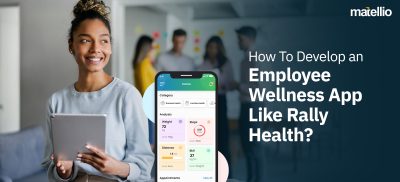
In a market where every tap, swipe, and session tell a story, data is no longer just a backend resource—it’s your north star. The smartest app development roadmap isn’t built in isolation—they’re sculpted from real user behavior, market shifts, and performance insights. When you leverage mobile app data with intention, your next feature isn’t a guess—it’s a calculated leap forward.
This blog explores how to fuel your application development roadmap using real-time mobile app data, making every sprint more strategic and every release more impactful.
What Is an App Development Roadmap?
An app development roadmap is more than a to-do list of features. It’s a strategic blueprint that:
- Aligns product goals with user needs
- Visualizes feature rollout timelines
- Balances tech feasibility with business impact
- Evolves with real-world usage and performance
The smartest roadmaps are flexible, data-informed, and outcome-driven—designed not just to ship features, but to deliver continuous value.
The Silent Shift: Why Data-Driven Development Is Now a Necessity
Modern app success isn’t built on instinct or competitive guesswork—it’s powered by real-time user behavior. In a landscape where every interaction counts, relying solely on intuition or trends is no longer sustainable. What truly drives retention and growth is the ability to listen to what your users are doing, not just what they’re saying.
Recent studies show that 25% of mobile apps are used only once after installation, and a staggering 71% of users churn within the first 90 days. These aren’t just missed chances—they’re signs of a disconnect between what businesses build and what users actually need.
To avoid that gap and build digital products that resonate, businesses must:
- Track and analyze user journeys with precision.
- Focus feature planning on actual engagement patterns.
- Use retention, session time, and churn as true north metrics
- Continuously adapt with a responsive, data-informed app development roadmap
This approach isn’t just a tactical improvement—it’s a strategic advantage. Organizations embracing enterprise mobility services are already moving toward real-time adaptability, launching smarter apps that evolve with user expectations and market dynamics.
The Blueprint: How Mobile App Data Fuels Your Roadmap
User Behavior Analytics: Decode the ‘What’ and ‘Why’
User behavior analytics help you understand how users actually interact with your app, beyond what surveys or reviews can reveal. By tracking in-app navigation paths, button clicks, screen transitions, and drop-off points, you gain clarity on:
- Which features are intuitive and frequently used
- Where users experience friction or confusion
- How users progress through your funnel or workflows
These insights allow teams to fine-tune feature placement, improve onboarding, and boost user satisfaction. Leading tools like Mix panel, Amplitude, and Firebase offer deep event tracking and visualization to bring these insights to life. This makes mobile app development services far more informed, iterative, and user centric.
Cohort Analysis: Prioritize Retention Over Downloads
Cohort analysis groups users by shared characteristics or behaviors, helping you track performance trends across time. For example:
- How long do users acquired from a specific campaign stay active?
- Do users who complete onboarding in under 2 minutes retain better?
These insights allow you to detect patterns in user retention and identify what keeps certain groups engaged. When strategically integrated into your app development roadmap, cohort analysis ensures that each feature release aligns with long-term user value.
Feature Adoption Metrics: Know When to Double Down or Pull Back
Not every released feature resonates. Feature adoption metrics allow you to:
- Track usage frequency, engagement depth, and drop-off rates for individual features
- Evaluate how adoption varies by user segments (e.g., power users vs. casual users)
- Inform future sprints by doubling down on high-value capabilities and refining or retiring underperforming ones
With these metrics in place, your application development roadmap becomes a dynamic plan guided by actual user behavior, not assumptions.
Crash and Performance Logs: Improve Stability First
Before adding new features, it’s critical to ensure your app is reliable. Crash logs and performance reports reveal underlying technical issues such as:
- Device-specific bugs or crashes
- Latency in high-traffic modules
- Backend bottlenecks causing poor load times
With robust app data analytics, teams can proactively resolve critical issues and pave the way for seamless user experiences.
Heatmaps and Session Recordings: Visualize UX Pain Points
Heatmaps and session recordings offer a visual layer to analytics by showing exactly how users interact with your app:
- See where users click, scroll, pause, or abandon screens
- Identify patterns in rage taps, confusion zones, or skipped content
- Understand what draws attention vs. what gets ignored
This visual insight enables teams to validate design improvements and prioritize items in their feature roadmap with absolute clarity.
Ready to Build a Smarter App Development Roadmap with Expert Insight?
Integrating Mobile App Data into Your Roadmap: A Step-by-Step Approach
Audit Existing Data Sources
- Before making any roadmap decisions, it’s critical to know what data you currently have and where it’s coming from. This step involves conducting a thorough audit of your existing analytics tools (like Firebase, Mixpanel, or Google Analytics), user event tracking systems, and crash/error reporting solutions.
- This process often reveals deeper opportunities for digital transformation consulting, especially when legacy systems or outdated tracking methods are limiting visibility and growth.
- Our data and product strategy teams begin by identifying gaps in your current analytics framework. From aligning events with business goals to integrating missing tracking points, we ensure that your data foundation is solid enough to build a high-impact, insight-led roadmap.
Define Success Metrics
- Once your data sources are cleaned and aligned, the next step is defining the right success metrics. KPIs should go beyond vanity metrics like downloads and focus on tangible business outcomes, such as Daily Active Users (DAUs), conversion rates, feature adoption, average session time, and retention rates.
- Defining these metrics early ensures that every data point serves a purpose in your app development roadmap, keeping product decisions grounded in value and impact.
- We collaborate with product stakeholders to translate business goals into measurable KPIs. Whether you’re targeting higher user engagement or lower churn, we help establish metrics that reflect both short-term performance and long-term product health.
Map Insights to Roadmap Phases
- With reliable data and defined KPIs in place, it’s time to translate those insights into action. This means mapping user behaviors and trends to specific phases of your app development journey. For instance, if your data reveals that users struggle with onboarding, an early-phase initiative might focus on improving tutorials or sign-up flows.
- This approach transforms assumptions into informed execution and gives your application development roadmap the clarity and precision needed to adapt as your user base grows.
- Our strategists work closely with product and engineering teams to interpret the data and connect it to specific roadmap actions. By prioritizing features that align with user needs and business impact, we help you avoid roadmap bloat and focus on what truly drives growth.
Test. Learn. Iterate.
- Data without experimentation is just information. Once a new feature or UX improvement is launched, A/B testing, split testing, and behavioral analysis must follow. Collect feedback, compare performance between versions, and use the learnings to refine your product further. This iterative loop allows you to stay agile and responsive to user needs.
- Continuous validation and improvement are only possible with strong app data analytics pipelines that allow product teams to measure what matters—without guesswork or delay.
- Our teams manage everything from hypothesis design to test execution and result analysis, ensuring that each iteration delivers clear and actionable insights.
Collaborate Across Teams
- The best roadmaps are not created in silos. Marketing, design, development, QA, and support teams all have a stake in the app’s success—and likely access to different sets of data. Collaboration ensures that all viewpoints are considered, knowledge is shared, and decisions are made with a 360-degree view of the product.
- This cross-functional harmony lays the groundwork for a scalable feature roadmap, where design, development, and strategy stay perfectly in sync as your app evolves.
- We facilitate data-driven collaboration across departments by setting up shared dashboards, automation workflows, and regular alignment sessions. Our goal is to ensure that insights don’t sit idle in a silo but drive collective, coordinated progress.
Operationalize with a Long-Term Vision
- The final step is turning your short-term planning into an ongoing system of growth. A future-focused team doesn’t just react to feedback—they proactively prepare for market shifts, platform changes, and evolving user expectations. This means aligning your roadmap with broader business goals and creating a sustainable framework for ongoing improvements.
- By focusing on continuous value delivery and agility, you’re not just refining a product—you’re building a data-driven roadmap that evolves intelligently over time.
- We work with clients to establish systems that convert one-time improvements into long-term strategies.
Why Choose Matellio for Your App Development Roadmap with Real Mobile App Data?
Your mobile app holds a universe of untapped insights, and the right partner can help you turn every data point into a strategic advantage. At Matellio, we don’t just build features—we co-create a scalable, insight-driven app development roadmap tailored to your business goals.
When you work with our team of experts, you unlock:
- We begin with behavioral signals and performance data to shape each phase of your application development roadmap. Every decision is based on actual usage patterns, not assumptions, ensuring the features you build are exactly what your users need.
- Our approach aligns user insights with business objectives to prioritize high-impact functionality. We structure your feature roadmap to focus on long-term value, increased engagement, and reduced churn across every milestone.
- Continuous testing and optimization are central to our lean development model. We help you deploy, track, and refine based on live user interaction—powering a truly data driven roadmap that’s responsive and scalable.
- Intelligent automation and machine learning enhance how your product adapts to users. Our team integrates custom models and predictive systems through purpose-built AI integration services to improve personalization, recommendations, and user engagement.
Let’s turn your app’s behavioral signals into actionable strategies. Whether you’re enhancing an existing product or launching a new one, we’re here to help you lead with clarity and confidence.
Fill in the form to connect with our experts and start planning your data-powered roadmap today.



